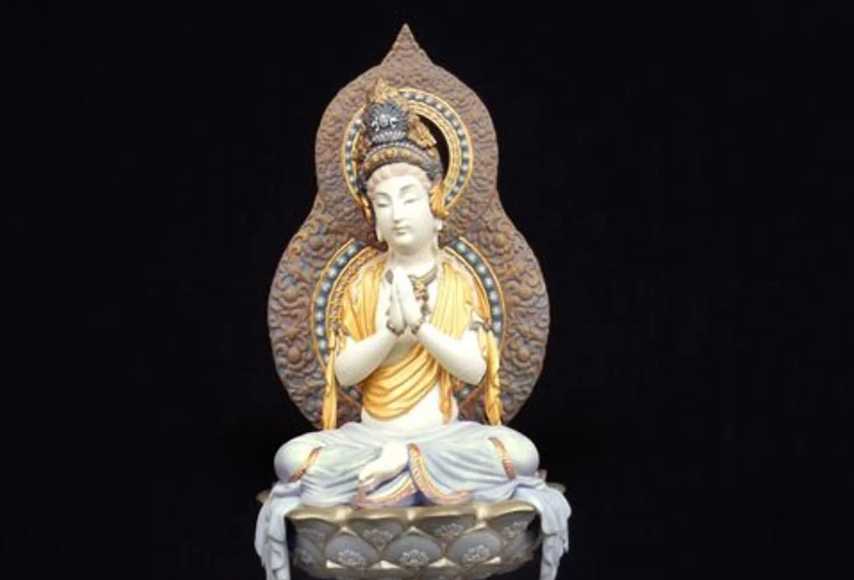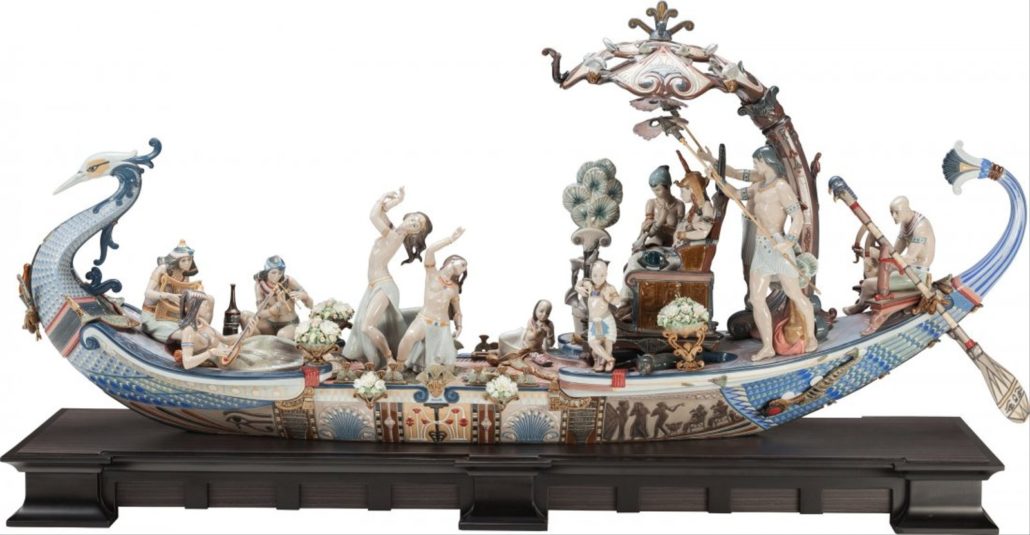
NEW YORK – A century after Meissen, Sevres and Capodimonte revolutionized the European porcelain industry in the 18th century, three brothers from Spain went and did it again.
In 1953, Juan, José and Vicente Lladró began crafting serviceable ceramics like plates and vases from home in Almàssera, Spain, and within two years they were making the Lladro ceramic figurines for which they are now world famous. They turned a passion for porcelain into a business empire and created revolutionary techniques still in use today, the most important being their moving away from the traditional triple-firing method to a single-fire. “This pioneering method also helped to define another hallmark of the brand: the characteristic pastel tones of a large part of its work,” says a history of the firm on its website at Lladro.com.
As the brothers’ skill — and the factory’s reputation — grew, Lladro figurines became more and more daring and complex. “After intensive research, it begins to work with gres, a new material that opens up a whole world of expressive possibilities. The particular resistance of this material and its characteristic earthy tones expand the creative resources of Lladró’s artists,” the company’s history states.
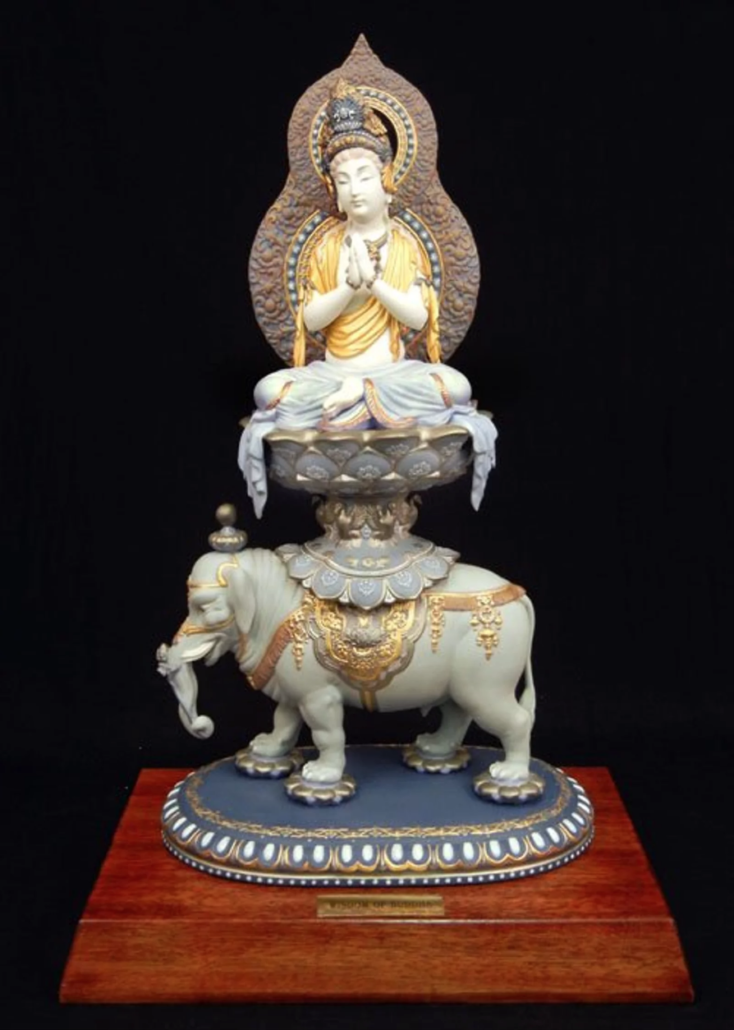
The talented artisans at Lladro continually challenge the technical limits of the material, and their creativity finds new ways to express itself as they master modeling techniques and decoration, creating works that are as distinctive as they are delicate in appearance. The artistic team of craftsmen at Lladro art is quite diverse and sizable, according to The Lux Authority website: “It starts with designers, painters, and ends with ornamentalists and flower artists. All of them pool their expertise to create pieces featuring the highest technical and artistic quality.”
One of Lladro’s most remarkable technical achievements was the “Flowers of the Season” series issued in 1982. Among its details are bouquets of tiny hand-sculpted flowers. Most figural groups required between 15 to 20 molds while the most intricate, large pieces might call for hundreds.
In the 1960s, the company entered the American marketplace. By the 1990s and 2000s, the company had expanded around the globe, although its one and only factory remains in Spain. Museums begin to take greater notice of Lladro, and in 1991 the Hermitage Museum in St. Petersburg organized a Lladro exhibition, acquiring “18th Century Coach” and “Don Quixote” pieces for its collection.
Among its most popular and endearing subjects are its couples, including the “Together Forever” figurine of a new bride and groom — long popular for wedding and anniversary gifts — along with a children’s series featuring a charming little girl holding flowers in”Spring,” Bible and nativity scenes, and a Don Quixote series. Pieces that celebrate life and spirituality have been a common theme since the company’s early days, and in the 2000s, works celebrating religious traditions and ideas take a greater role in the company’s lines. The company also makes a shift away from its traditional pastel hues by offering sculptural white pieces or bold and colorful works. These new directions are partially attributed to increased collaborations with outside designers, including Culdesac, Bodo Sperlein and Jaime Hayon.
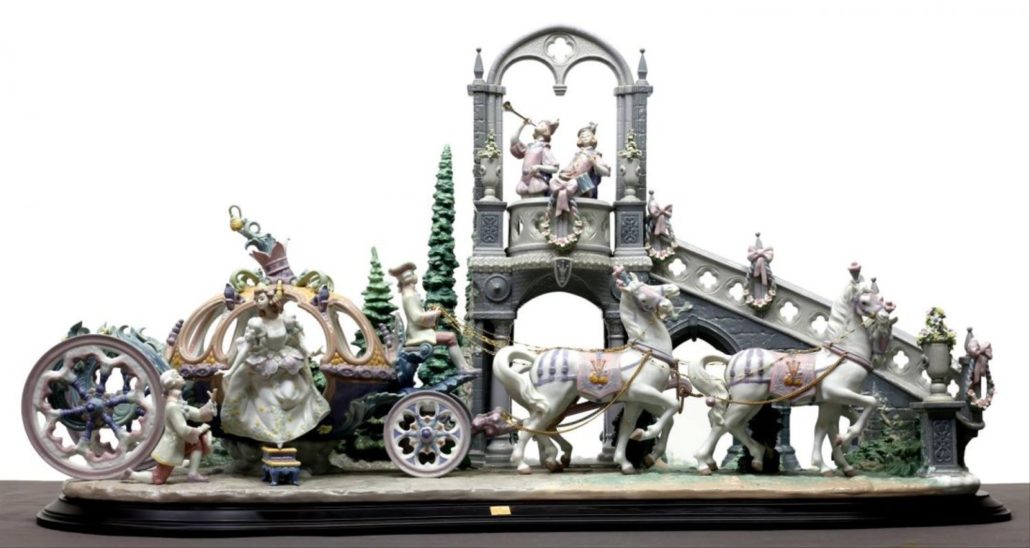
While Lladro figurines have a delicate appearance, they are actually technological and artistic marvels, requiring the most talented sculptors and many long hours of labor. The monumental figural group on a wood base,”Cinderella’s Arrival,” for example, which depicts Cinderella exiting her carriage at the ball, measures a whopping 25½ by 45 by 17½ inches and weighs a hefty 93 pounds. It was sculpted by Francisco Polope and introduced in 1994. According to Lladro’s website,”This piece, one of the most ambitious projects ever undertaken by the artists of the City of Porcelain, marks a milestone in the work of Lladro. In a display of artistic and technical virtuosity, even the tiniest detail imagined by Perrault has been recreated: the horses reins are gold-plated while the harnesses are embellished with zircon and the inside of the carriage is profusely decorated. Luxury, magic and dreams all come together in a creation which measuring 116 cm long, is one of the biggest Lladro pieces yet undertaken.”
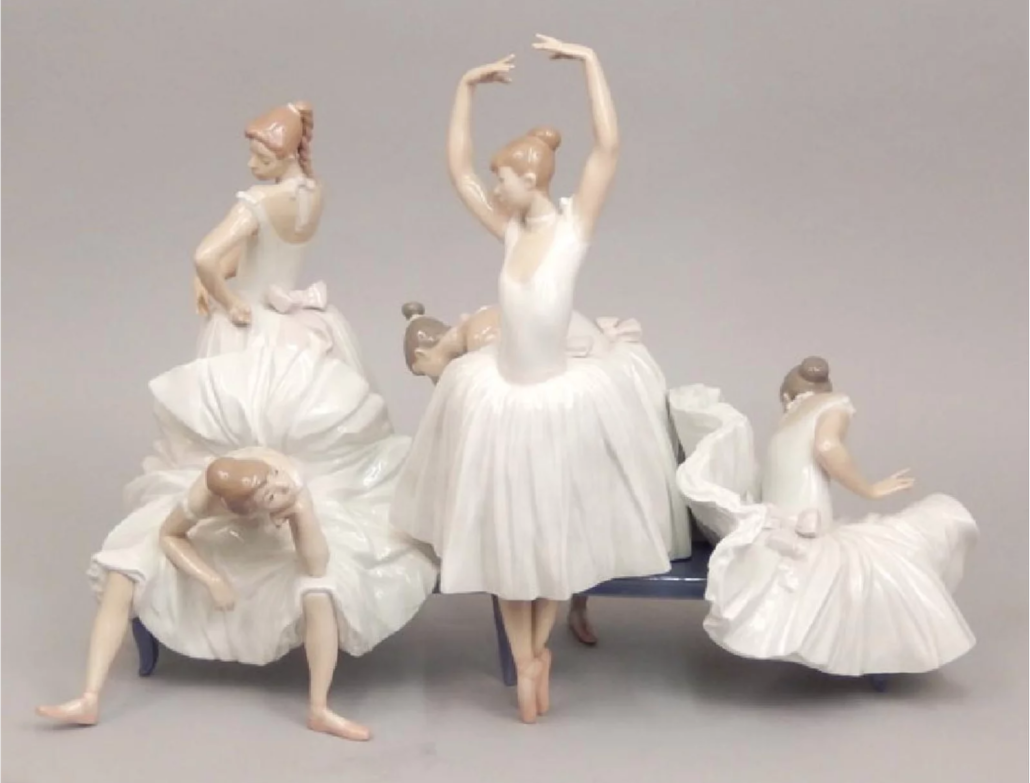
Cindy Stephenson, owner/auctioneer of Stephenson’s Auction in Southampton (suburban Philadelphia), Pa., has sold many Lladro figures over the years.”The very large, earlier, retired Lladros that are intact or in perfect condition seem to be doing well, although not anywhere close to the original retail prices that were paid,” she observed. While the market is down a bit for Lladros, especially among millennials, the best examples can still bring high prices at auction.
Tips for new collectors?
“Anyone interested in collecting Lladros should always look for the ones that are perfect,” Stephenson said.”Many Lladros have applied flowers or other small details that can break off easily. Always check the small details on them.”
Visit Stephenson’s Auctioneers online at www.stephensonsauction .
# # #


